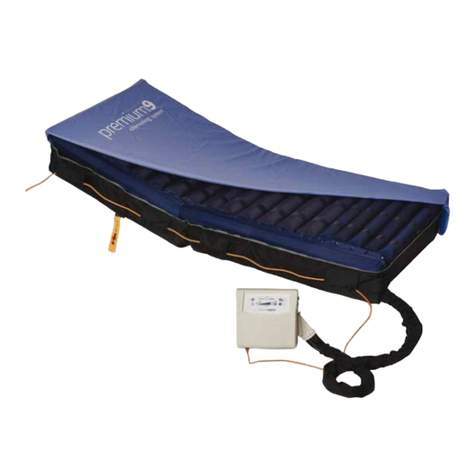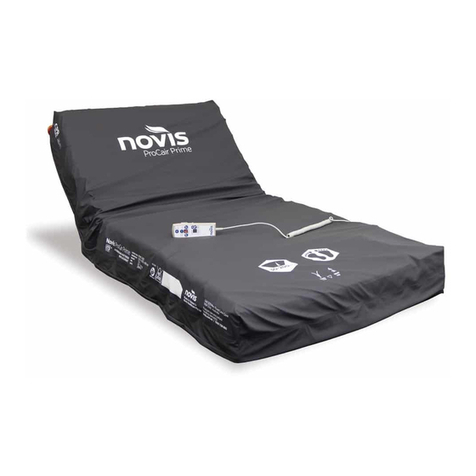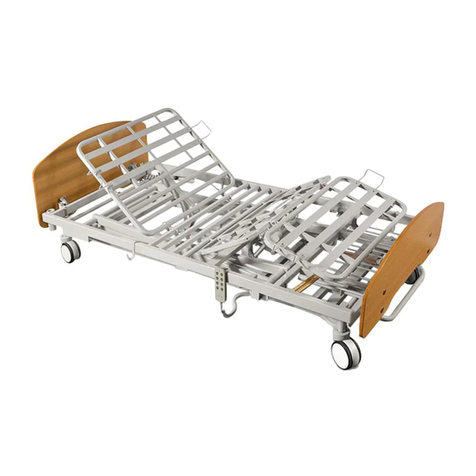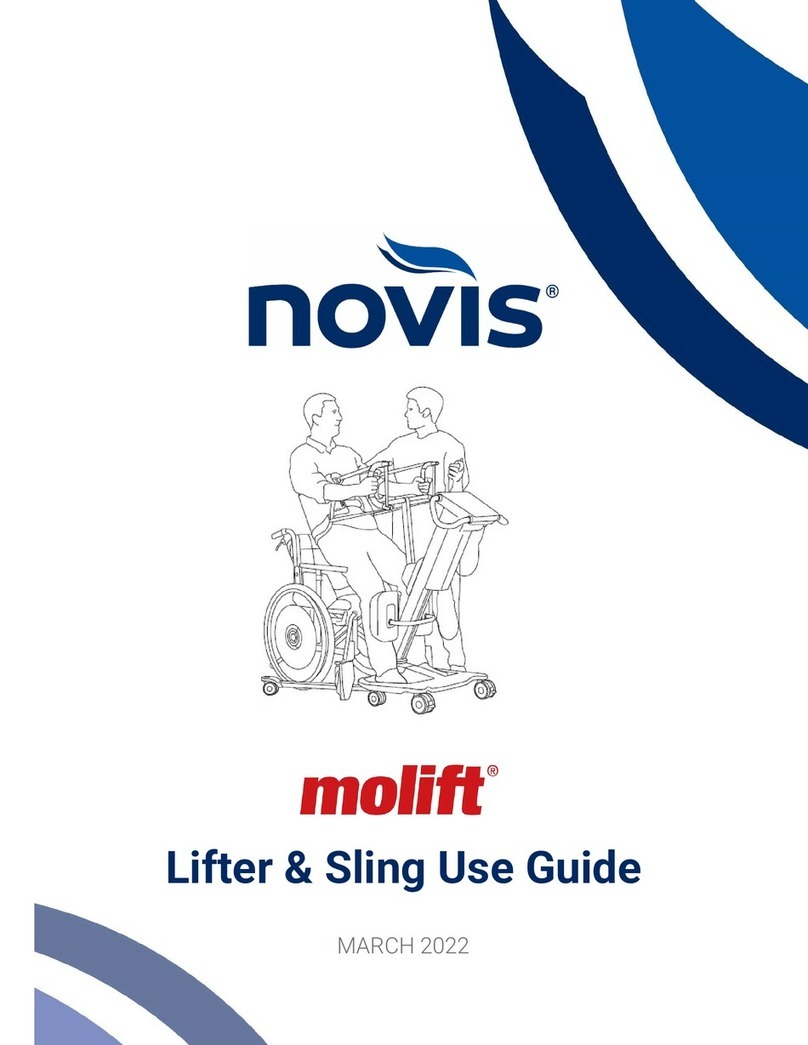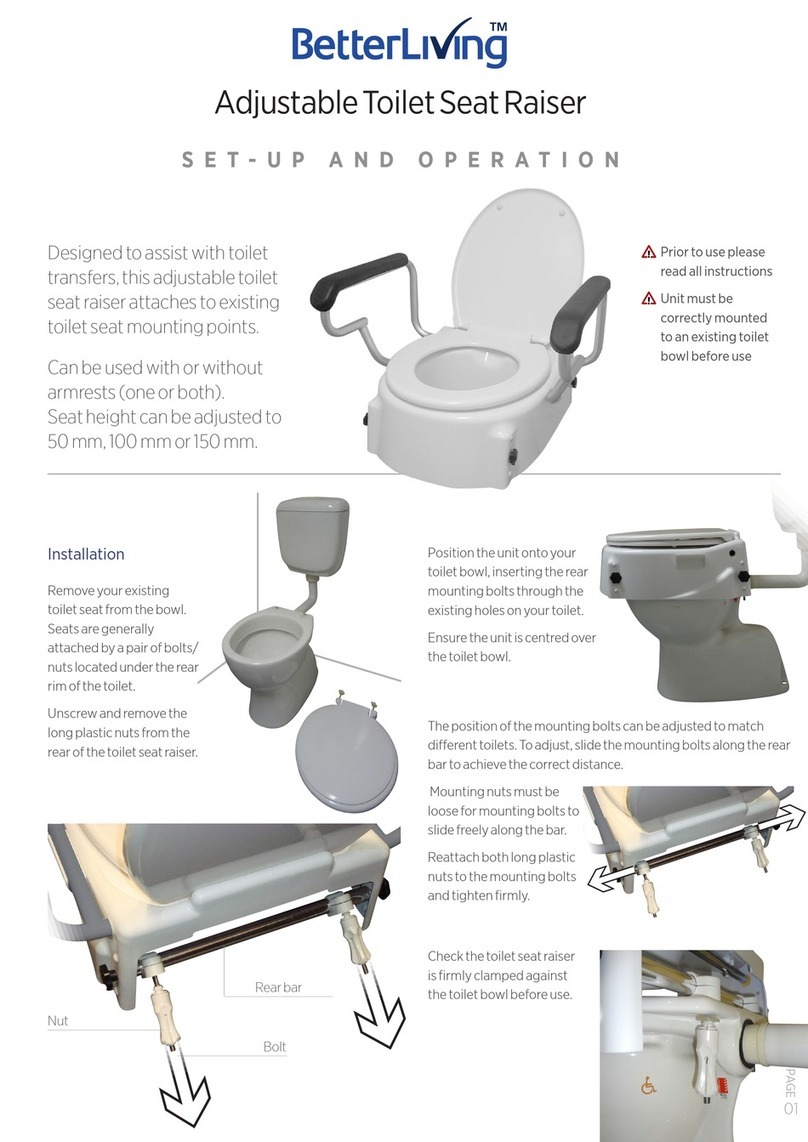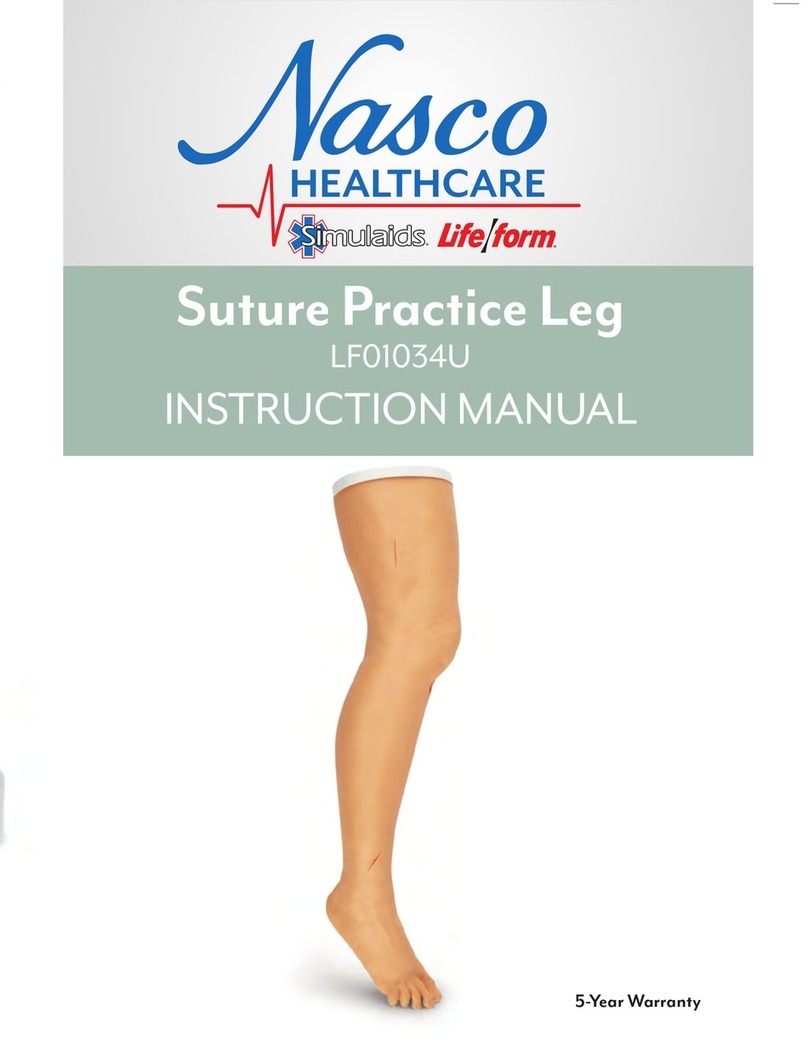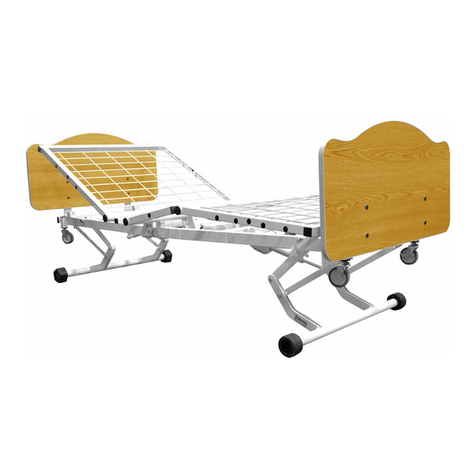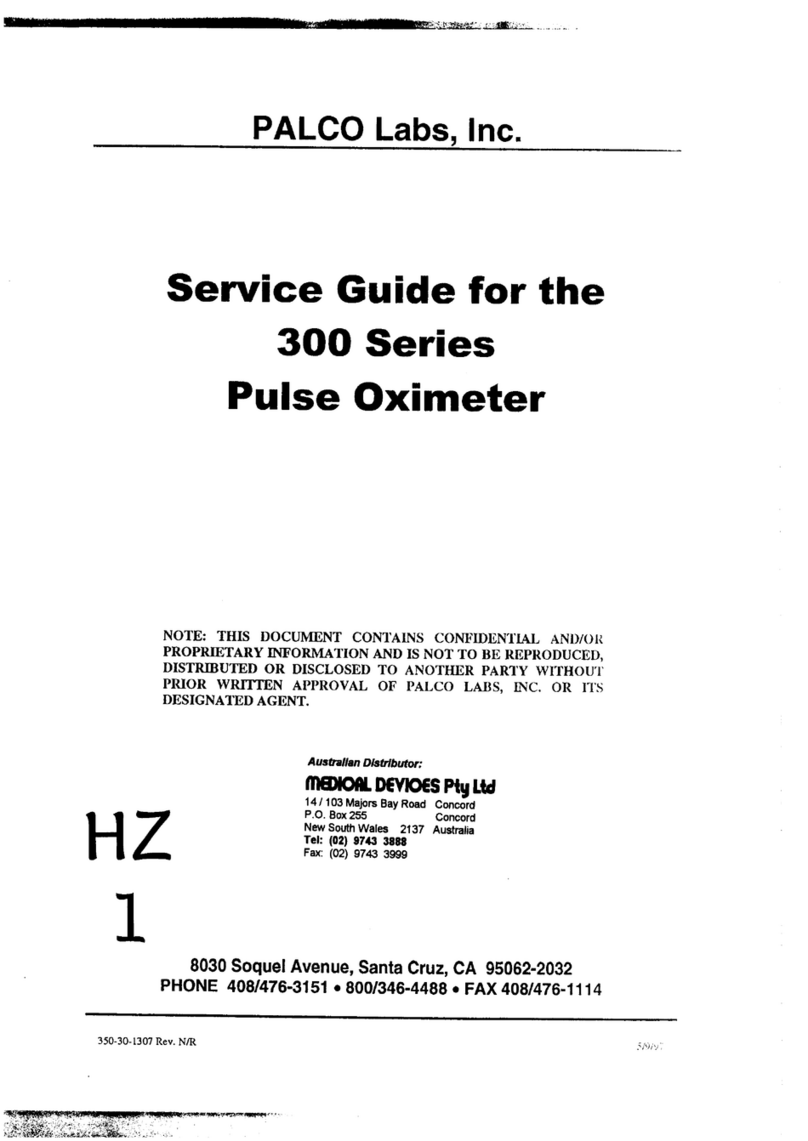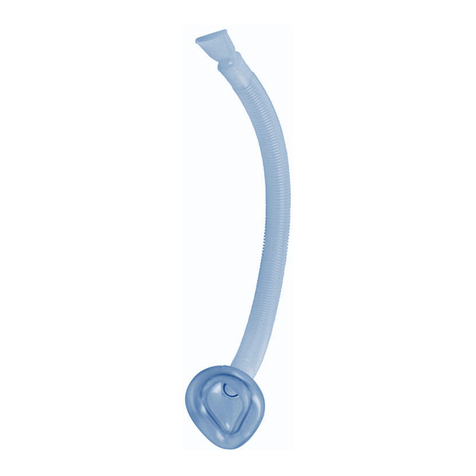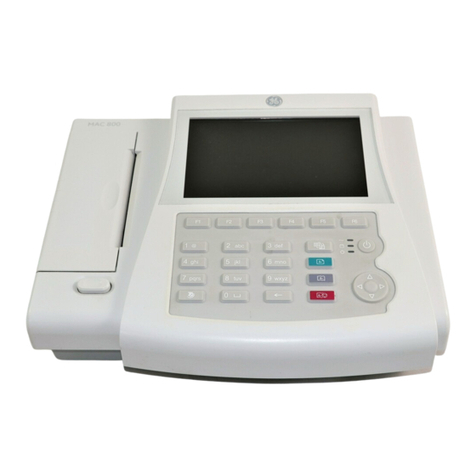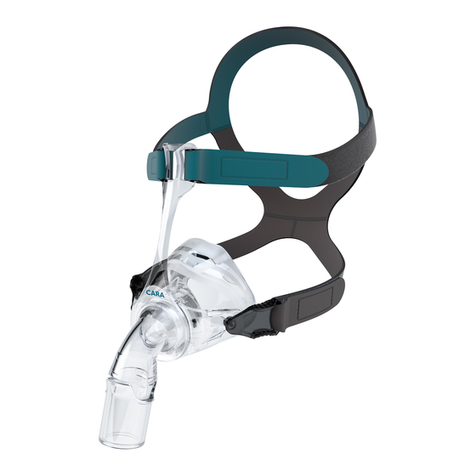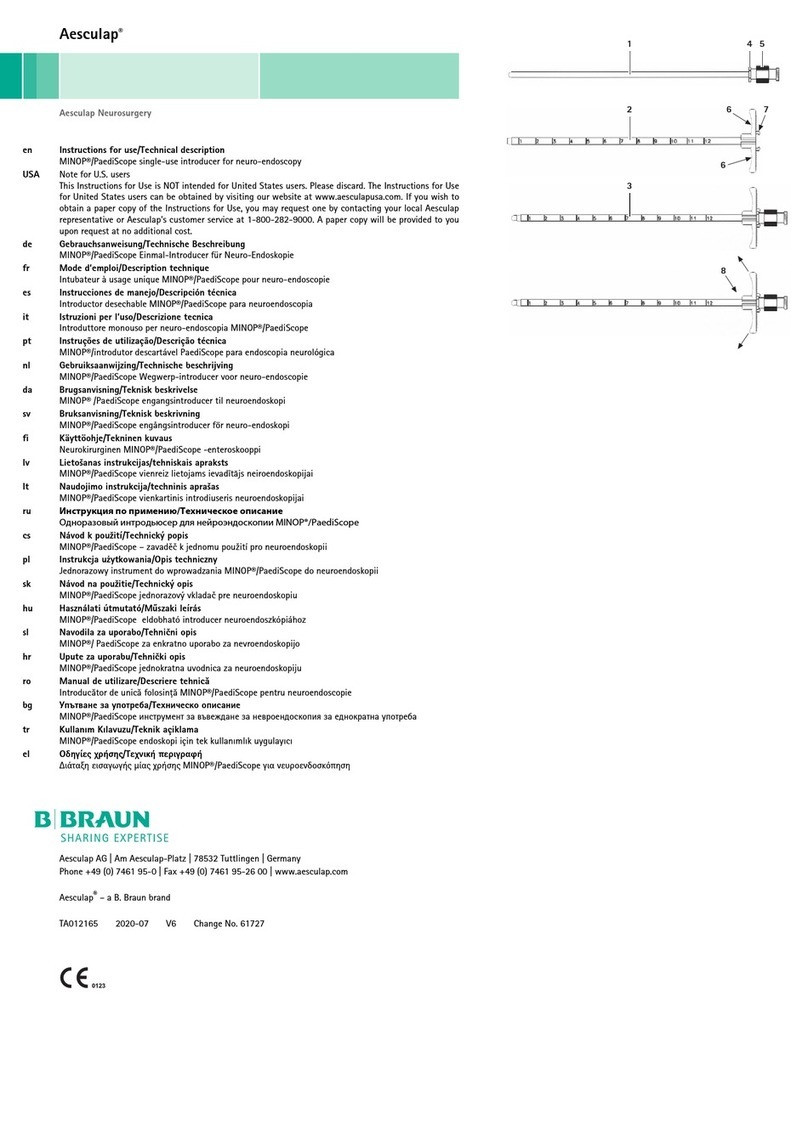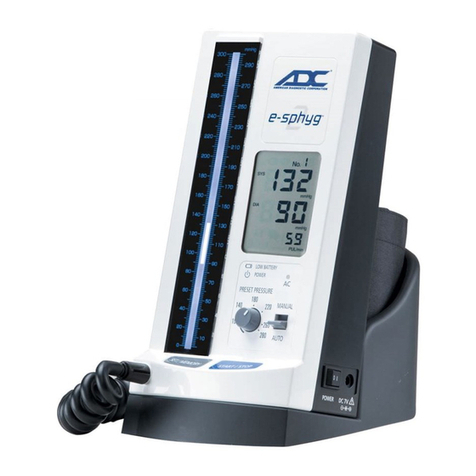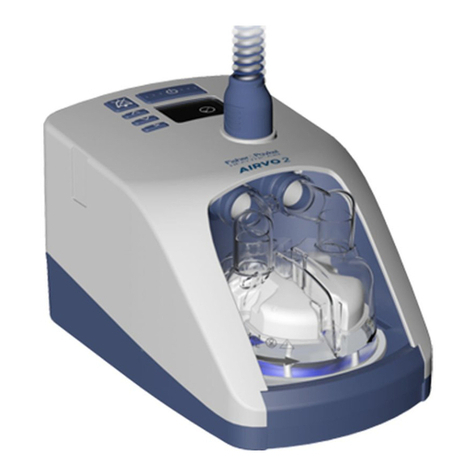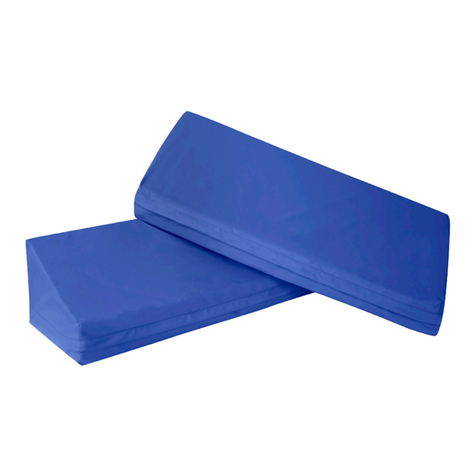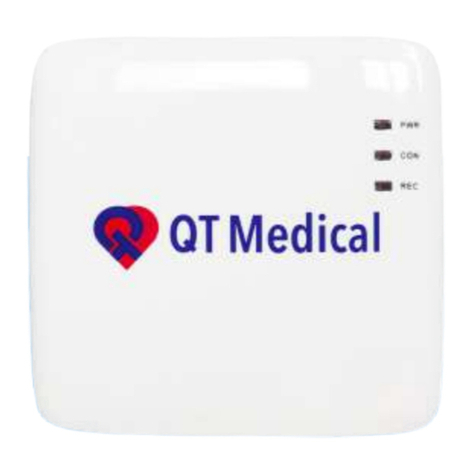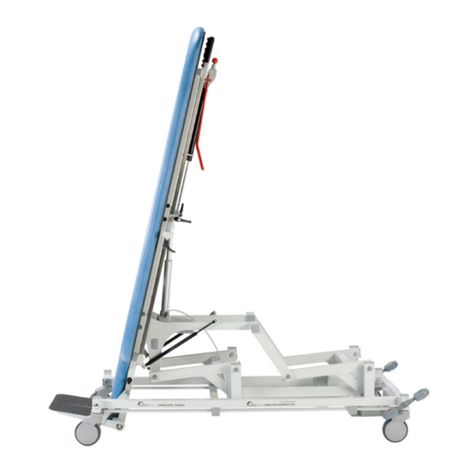Novis ProSling User manual

GAIT TRAINING VEST
User Guide
160 kg
warranty lifter
1
YEAR
YOKE
ONLY

overview
The ProSling Gait Training Vest is a versatile sling
with a wide range of applications for patients who
can partially weight bear. For use with either a
mobile patient lifter (with or without gait arms) or a
ceiling hoist, this sling is used to help with standing,
gait or balance training and general toileting. It
reduces strain on caregivers while helping them to
deliver the physical training to meet patient needs.
The ProSling Gait Training Vest supports the patient
around the upper body and partly under the arms,
while the leg harness holds the sling in place. With
a firm yet comfortable fit, the sling is padded under
the arms for optimal user comfort with a safety
buckle for added security. The design of the sling
leaves the lower body easily accessible for dressing
and undressing, to facilitate hygiene and toileting
needs.
This sling is suitable for use with either a single or
double yoke spreader bar.
important notice
Before using the Gait Training Vest, it is important
to read this user guide and understand the
operating instructions and safety precautions.
Failure to do so could result in patient injury and/or
damage to the product.
The ProSling range has been tested and complies
with requirements of AS/NZS ISO 10535:2011.
If you have any questions, please contact
Novis Healthcare on 1300 738 885
definitions of symbols used
Important information
Warning
DO NOT…

Yoke attachment straps Yoke attachment straps
Vest
Torso buckles Torso buckles
Upper edge
Leg straps
with padded strap cover
Label
with size marking
Leg straps
with padded strap cover
Leg strap buckles Leg strap buckles
Leg strap buckles Leg strap buckles
sling components

safety precautions
DO NOT lift a patient unless you are
trained and competent to do so. Ensure
that all users read this guide, and any
relevant lifter instructions, before fitting a
sling or operating a patient lifter.
Patient lifters and slings should only be
used under the supervision of a qualified
healthcare professional. As a caregiver, you
are responsible for the patient’s safety. You
must be well informed of the patient’s
condition and ability to manage the lifting
situation.
DO NOT leave a patient unattended in a
lifting situation.
Lifting and transferring a patient always
involves a degree of risk. Ensure all users
are trained and familiar with the user
guides for slings, lifter systems and any
related accessories. A complete
understanding of the contents of the user
guides is essential.
ALWAYS ensure the correct sling is used to
match the patient’s weight and suits the
patient’s needs with regard to model, size,
fabric and design.
ALWAYS ensure the sling is appropriate for
the lifter and the lifting situation. Exercise
caution and care when using lift
equipment and accessories.
DO NOT lift apatienthigher offthe underlying
surfacethanisneededtocompletethelifting
andtransferprocedure.
Regularly inspect the sling for damage and
general wear and tear, especially after
laundering. Check carefully for wear and
damage to seams, fabric, straps and strap
loops. Do not use if the sling is damaged or
worn in any way.
Forusewith a weight bearing patient only.

✔✘✘
choosing the right size
For the ProSling Gait Training Vest to function
properly, the width of the vest must be in correct
proportion to the circumference of the patient’s
upper body. Patients vary greatly in height and
weight and therefore have different requirements
with regards appropriate vest sizes.
Use these sizing recommendations as a guide only.
The outside strap of each sling is colour coded to
indicate size. Please refer to the ProSling Size
Selection Chart for guidance on sizing
recommendations. This chart is published in the
ProSling Range Guide and is available to
download from www.novis.com.au
CORRECT TOO SMALL TOO LARGE
Size / strap colour WWidth of waist mm
Small 300 - 420
Medium 420 - 520
Large 520 - 640
W

3Connect both
torso buckles and
tighten by firmly
pulling the straps
across and down,
while holding the
vest. Ensure both
straps are firm yet
comfortable.
fitting the vest to the patient
When patient is standing
1Lengthen all straps to their maximum
extension (torso, legs and yoke attachment
straps).
2With the label at the rear and facing
outwards, position the vest around the
patient’s waist (underneath the breasts),
approximately 50 millimetres below the
armpits (roughly a three finger gap).
4Check there is still a 50 mm gap between
underarm and vest. Adjust vest position if
needed.
50 mm
5From behind the
patient, pass the leg
straps through the
inside of the legs and
connect both leg strap
buckles at the front of
the vest. Ensure the
padded strap cover is
appropriately
positioned to ensure
patient safety and
comfort.
6Pull down gently on
the leg straps to
tighten to a
comfortable fit.
When patient is seated
1Ask the patient to lean forward slightly.
With the label at the rear and facing
outwards, position the vest around the
upper body, ensuring the vest is centred and
approximately 50 mm below the armpits.
2Connect both torso buckles and tighten by
firmly pulling the straps across and down
then adjusted to the size of the patient.
3With vest securely fitted to the upper body,
pass each leg harness underneath the thigh
- the leg may be raised slightly to make this
easier.
4Connect both leg strap buckles at the front
of the vest.
5Ensure the padded strap cover is
appropriately positioned to ensure patient
safety and comfort.
6Manually help the patient to stand, ensuring
their feet are firmly on the floor Once the
patient is standing upright and balanced, the
vest can be connected to the lifter.

50mm
connecting the vest to the lifter
1Raise the lifter spreader bar approximately
300 mm above the patient’s head.
2The patient can now walk (or be wheeled)
into the lifter, facing towards the mast, using
the gait arms (if available) to stabilise
themselves.
3Carefully lower the spreader bar to
approximately 50 mm above the patient’s
head.
4Attach all four yoke attachment straps to the
spreader bar, ensuring the straps are
correctly aligned and not twisted.
In circumstances where it may be difficult to
attach the vest to the lifter, or fit to the patient
when in the sitting position, it may be easier to
attach the vest to the spreader bar prior to fitting
to a patient in the standing position.
On completion of use, the vest should be
removed from the spreader bar to avoid
potential for it to be used as a lifting sling.
5Tighten the straps by sliding buckles
downwards, ensuring the straps are evenly
spaced and the spreader bar is not tilting to
one side.
6Check the patient’s safety and comfort level
before training commences.

after a fall
removing the vest
If a patient falls while using the vest, or loses
balance and is unable to right themselves:
1Slowly raise the spreader bar until the
patient feels adequately supported to
reposition their feet firmly on the floor and
regain their balance.
2Assess if the patient is able to continue the
training session.
3Before continuing training, readjust the fit
and position of the vest:
acheck there is a 50 mm gap between
underarm and vest
bensure the vest is not constraining breasts
censure the padded strap cover is covering
the leg strap and appropriately positioned
for optimum patient comfort
4Lower the lifter until the patient is bearing
their own weight and the spreader bar is
approximately 50 mm above the patient’s
head.
When leaving the vest attached to the lifter, vest
should be removed with the patient facing
outwards (away from the lifter mast). If the patient
is unable to turn or to move away from the lifter
unaided, place a wheelchair or seat behind the
patient before removing the vest.
On completion of use, the vest should be
removed from the spreader bar to avoid
potential for it to be used as a lifting sling.
1Undo both leg strap buckles and carefully pass
leg straps through the inside of the patient’s
legs.
2Undo both torso buckles.
3Assist the patient to remove both arms from
the vest. Carefully raise the spreader bar if
necessary.
4Help patient to move forwards and clear off
lifter legs, or lower patient into chair.

care and cleaning
Do not use high pressure cleaners or harsh,
caustic chemicals for cleaning.
Avoid contact with excessive heat, acid
aerosols, organic solvents or alkalis. If you
suspect contamination, wash out well in
warm water.
Sling should be washed between patients or if
there are visible signs of body fluids and/or
substances present.
To wash, use a solution of mild soap and warm
water and rinse well. Sling can be machine washed
up to 85°C.
Air dry in a warm, clean area away from any direct
heat source. Do not place on a heating system or in
direct sunlight. Do not tumble dry, iron, wring dry
or dry clean.
safety and maintenance
Before each use, the vest should be inspected for
signs of wear and tear. The vest must be inspected
more thoroughly at least once every 6 months.
More frequent inspections may be required if the
vest is used or washed more often than normal.
If any faults are found immediately withdraw the
vest from use.
Regular inspection
Inspect the vest for general signs of wear, tearing or
fraying. Check for obvious damage to the fabric
including webbing burns, cuts, tears or fraying.
Examine the stitching around the base of each
loop, all seams and side tape for broken lines,
unravelling or any free strands. Vests showing signs
of the above should not be used.
During regular use, the vest will come into contact
with equipment when under load. Over time this
causes rubbing, tarnishing and wear, which does
not usually affect the performance of the vest.
However, if this results in damage to wave patterns
or core support sections of the vest, the affected
sling should be disposed of.
Storage
Store the dry, clean vest in a sealed, air tight bag or
container to protect the sling from moisture
ingress. Where possible use the original zip lock
bag supplied.
Vests should be stored away from sharp objects,
chemicals, heat or any other sources of damage or
fire risk.
Expected life time
The product has an expected life time of 1-5 years
with normal use. Expected life time varies
depending on the fabric, use frequency, washing
procedure, and weight carried.

warranty
Provided by Novis Healthcare ABN 45 102 735 491 Unit 12, 12 Mars Road Lane Cove NSW 2066
Australian Consumer Law
Our goods come with guarantees that cannot be
excluded under the Australian Consumer Law. You
are entitled to a replacement or may be entitled to
a refund for a major failure and compensation for
any other reasonable foreseeable loss or damage.
You are also entitled to have the goods repaired or
replaced if the goods fail to be acceptable quality
and the failure does not amount to a major failure.
Where a failure does not amount to a major failure
Novis Healthcare is entitled to choose between
providing you with a repair, replacement or refund.
To obtain compensation, you would need to
provide documentary evidence of the loss or
damage suffered and documentary evidence that
such loss or damage was a reasonable foreseeable
consequence of a failure by Novis Healthcare to
comply with a consumer guarantee under the
Australian Consumer Law.
At our option:
• goods repaired may be replaced by refurbished
goods of the same type rather than being
repaired
• refurbished parts may be used to repair goods
In addition to all rights and remedies which you may
be entitled to under the Competition and Consumer
Act 2010 (Commonwealth) and any other relevant
legislation, Novis Healthcare warrants each of its
products to be free of defects in materials and
workmanship for a period of 12 months (unless
otherwise stated), commencing from the date the
product is received by the purchaser.
Product Warranty
In addition to all rights and remedies which you
may be entitled to under the Competition and
Consumer Act 2010 (Cth) and any other relevant
legislation, Novis Healthcare warrants each of its
products will, with normal use and service to be
free from faulty parts, manufacture or workmanship
for a period of 12 months (unless otherwise
stated), commencing from the date of purchase.
Subject to the provisions of the Australian
Consumer Law, Novis Healthcare excludes, to the
fullest extent permitted by law, all liability in respect
of loss of profit or other economic loss, direct or
indirect or consequential, special, general or other
damages or other expenses or costs which may
include negligence.
Warranty Claims
To claim under this warranty, please contact Novis
Healthcare and have your receipt or proof of
purchase available. Novis Healthcare may need to
assess the defect before determining any claim,
and additional information may be requested to
process your claim.
Any expenses incurred relating to the return of the
defective product to Novis Healthcare will be borne
by us. We will then, at our discretion, either repair
or replace the product, or refund your money and
take back the product. Warranty repairs do not
extend the length of the warranty period.
Limited Liabilities
Our liability under this manufacturer’s warranty is
subject to us being satisfied that a defect was
caused by faulty parts, manufacture or
workmanship, and was not caused or substantially
contributed to by other factors or circumstances
beyond our control, including (but not limited to)
defective installation, maintenance or repair,
product modification or alteration, any neglect,
misuse, or excessive use, normal wear and tear or
failure to follow manufacturer’s instructions.
The benefits conferred by this manufacturer’s
warranty are in addition to all rights and remedies
conveyed by the Competition and Consumer Act
2010 (Cth), and any other statutory rights to which
you may already been entitled, and this warrant
does not exclude, restrict or modify such rights or
remedies that are implied by law.
Mail To
Novis Service Centre:
Unit 12, 12 Mars Road Lane Cove NSW 2066
For more information please contact us on
or visit www.novis.com.au

Novis Healthcare reserves the right to alter any product specifications without prior notice.
Novis Healthcare accepts no liability for any use, change or assembly of the product other than
as stated in this user guide.
© Copyright Novis Healthcare 20175. All rights reserved

Jul17
Pressure care and patient handling specialists
novis.com.au /1300 738 885
Other manuals for ProSling
1
Table of contents
Other Novis Medical Equipment manuals
